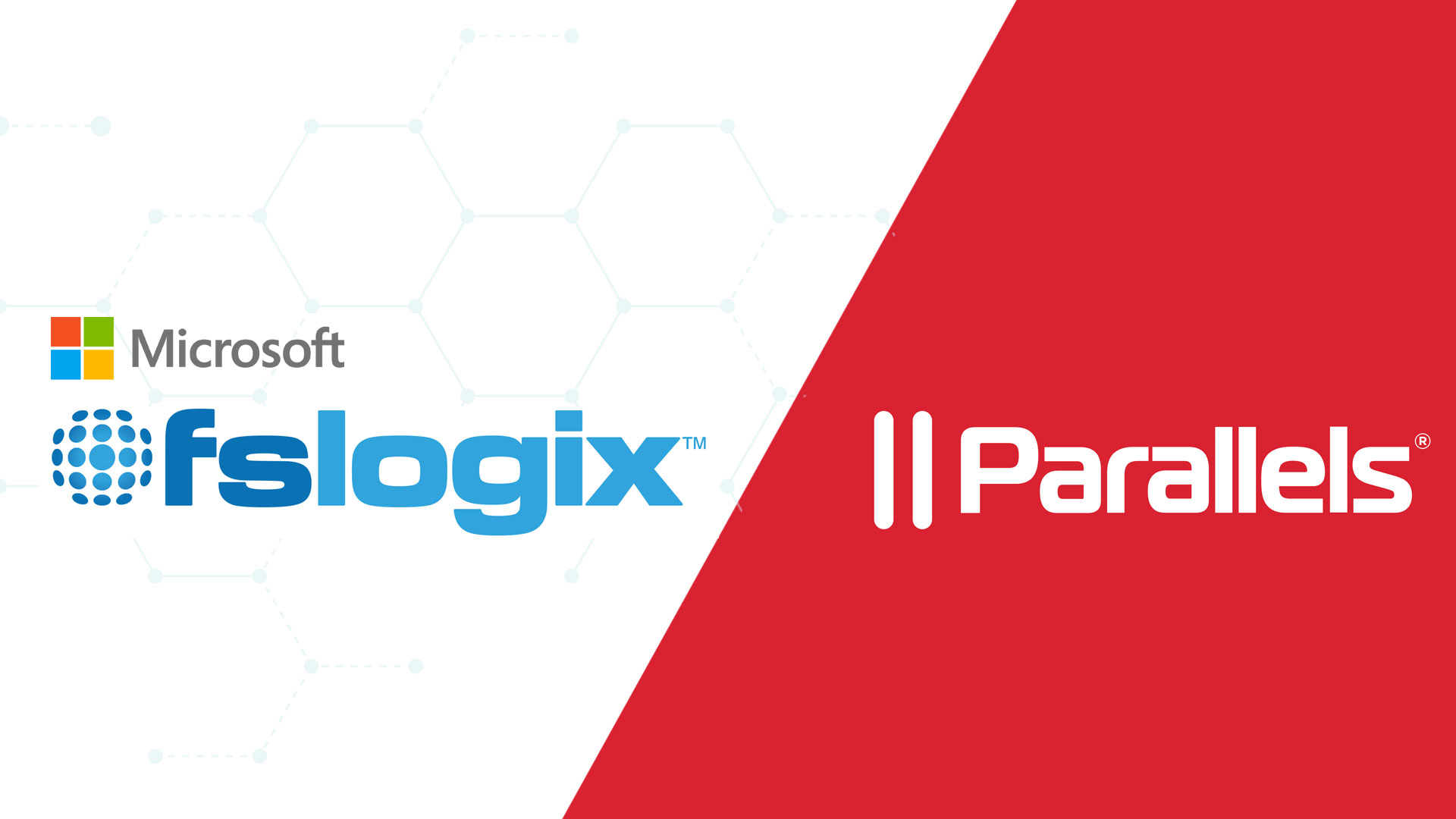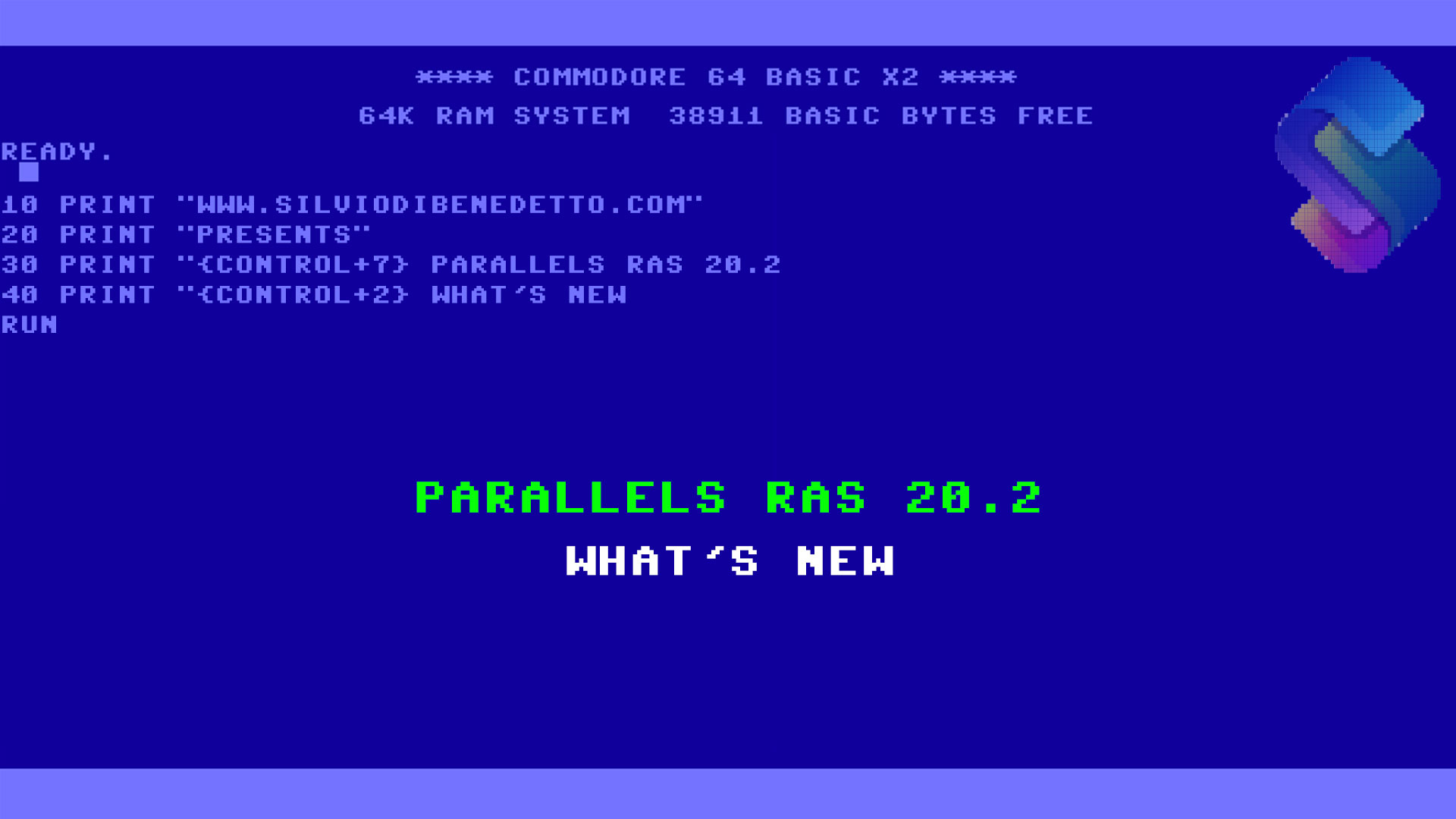When you plan to use RemoteApp or Virtual Desktop Infrastructure (VDI) like Windows Virtual Desktop, it’s critical define where collocate the users profile. There are different aspects to analyze like:
- Number of Session Hosts or Virtual Desktop Server
- Number of Users
- Users’ profile space
- Performance
In my carrier I saw many times companies that use the Windows drive to store profile and this is one of worst error because is dangerous, is unmanaged, is not flexible. Out of the box Windows Server offers alternative like:
- Folder Redirection
- Roaming Profiles
- Users Profile Disks
All of these were a good solution, depends by scope, but the first two were deprecated from Microsoft starting Windows Server 2019 and the last one requires MDOP license and the scalability was not good so it will be retired in the fututre.
To reduce the gap with competitor, without spend money to create a new product, at the end of 2018 Microsoft acquires FSLogix, to help extend their virtualization capabilities and provide an even richer experience in app-provisioning platform that reduces the resources, time and labor required to support virtualization.
FSLogix
FSLogix is a set of solutions that enhance, enable, and simplify non-persistent Windows computing environments. FSLogix solutions are appropriate for Virtual environments in both public and private clouds. FSLogix solutions may also be used to create more portable computing sessions when using physical devices. Solutions include:
- Profile Container
- Office Container
- Application Masking
- Java Version Control
The great advantage of FSLogix is the possibility to manage the classic Profile but also Office 365 Profile, this means separate the Outlook cache from the rest of profile, in two physical VHDX files each of one can be stored in different Volume of LUNs.
Parallels Remote Application Server
Parallels RAS is a streamlined remote working solution that provides secure access to virtual desktops and applications, that offers flexible mixed deployment models and allowing organizations to use different technologies in multiple scenarios. Three key points of RAS are:
- Deliver virtual desktops and apps to any device, anywhere, anytime
- Enhance data security by centrally monitoring and restricting access
- Quickly scale your IT infrastructure on-demand with auto-provisioning
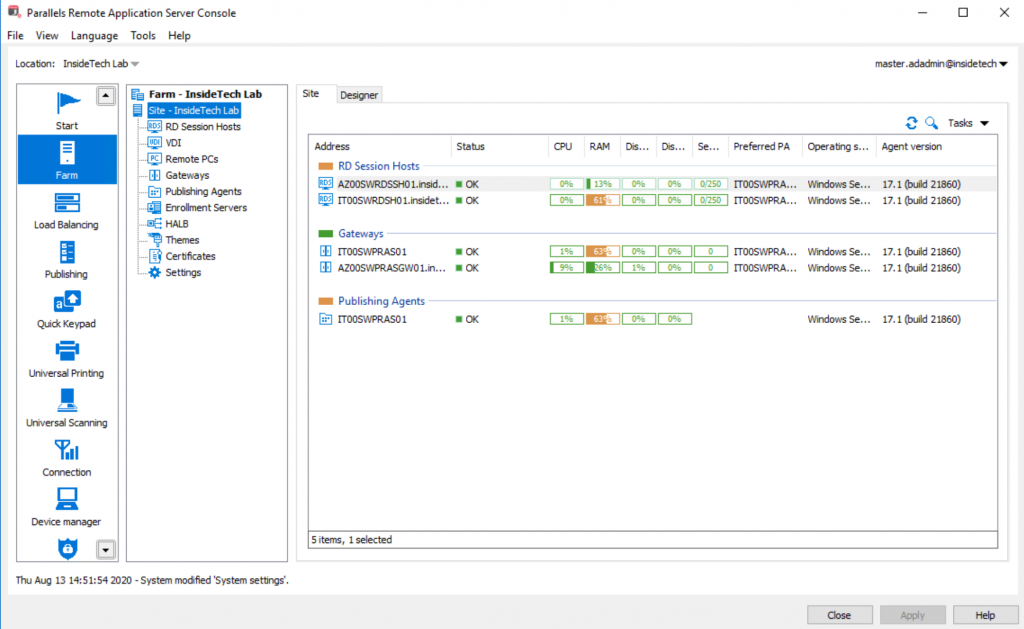
In this article we will see how to configure Parallels RAS to use FSLogix for users profile. In this scenario, the virtual machine is on Microsoft Azure to demonstrate one of the possibility to use the product. The first step is create a new disk; as you can see from the figure 1, I’m using Premium SSD with 1TB…quite expensive but with a great IOPS. This because in Western Europe I cannot use Ultra Disk: the difference between Premium SSD and Ultra is the possibility to set IOPS without buy unneeded space.
For more information, check this article: Announcing the general availability of Azure Ultra Disk Storage
Configuration & Setup
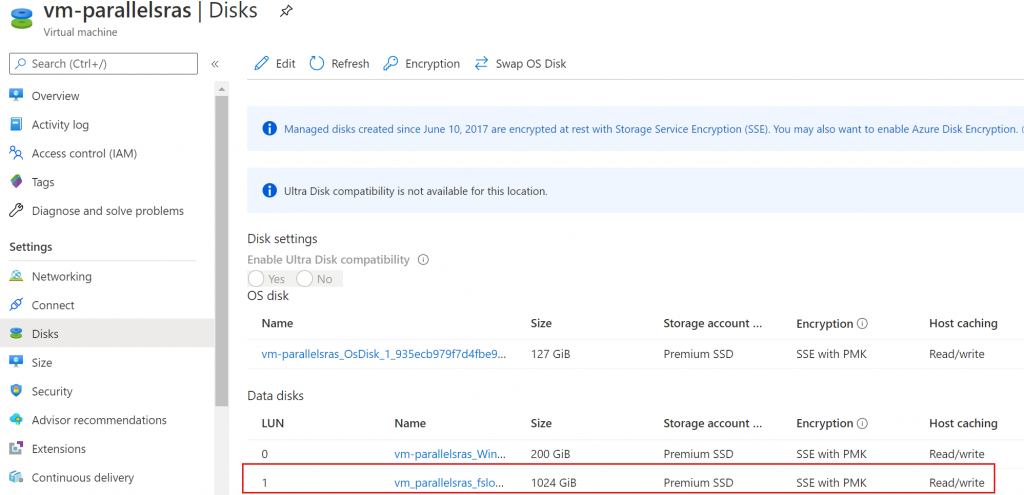
The second step is install FSLogix engine inside the Session Host (in each Session Hosts or Virtual Desktop Infrastructure servers if you have complex scenario). The setup can be found at this link: Install FSLogix Agent.
Remember, FSLogix tools aren’t licensed independently. Before downloading and using FSLogix, verify that entitlement and configuration requirements are meet.
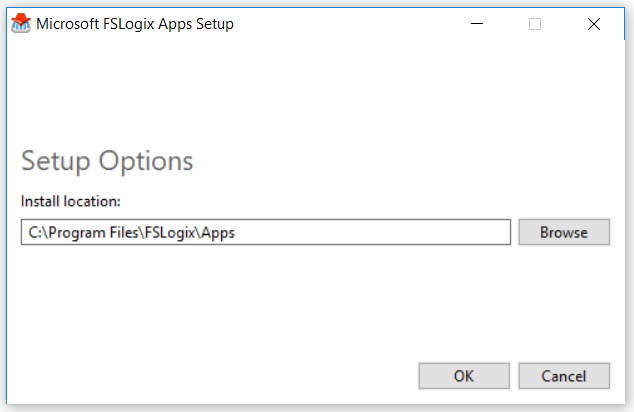
With the setup there are also ADMX files to manage the Group Policy Object (GPO). After the import of ADMX, create a new policy to manage user profile; that object must be configured per Computer. There’s no too much to say about this part but I suggest to configure all of these settings, without forget to set VDHX (instead VHX).
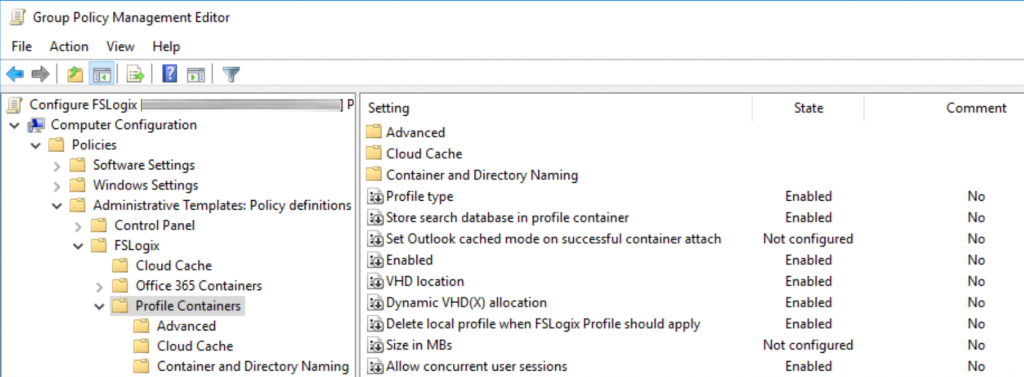
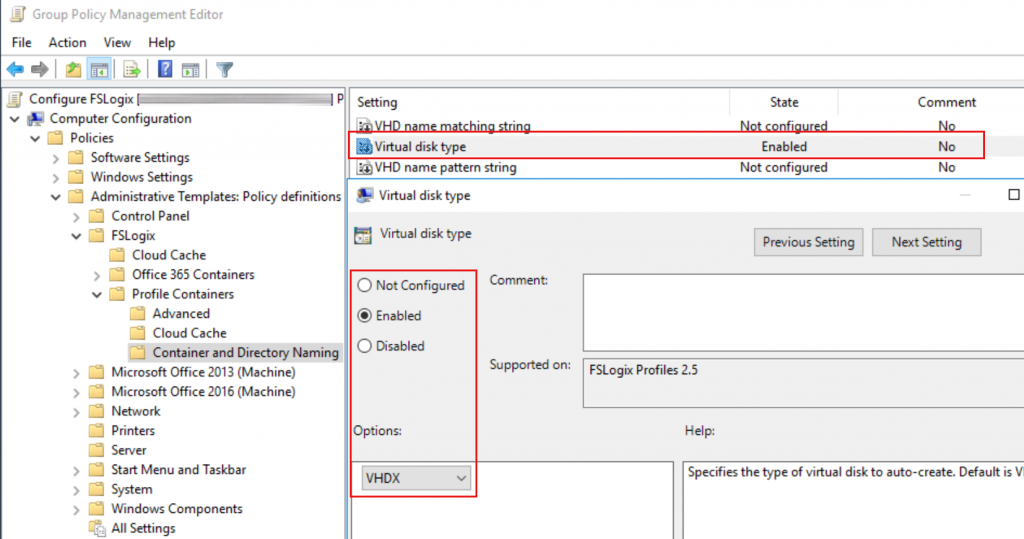
The next step is manage what kind of users are allowed to use Profile Container; by default all users can use it but the group can be changed or you can add disallowed users into the FSLogix Profile Exclude List.
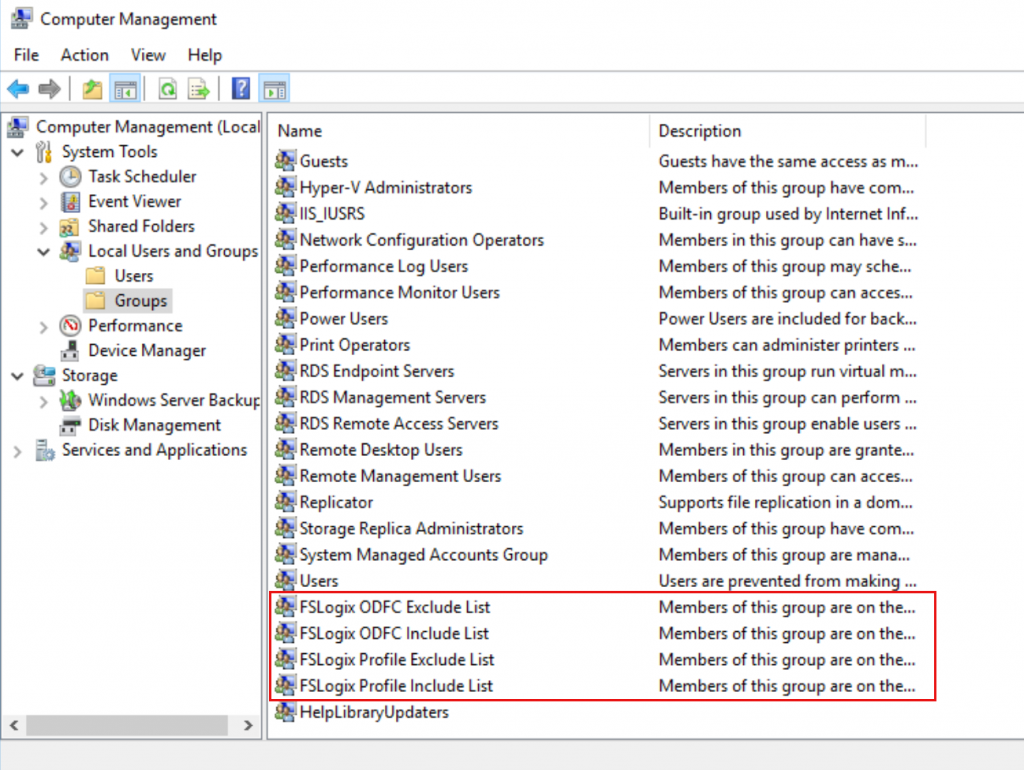
Another important task is exclude the folder where you plan to collocate FSLogix folder, from Windows Defender (or the antivirus installed on your server).
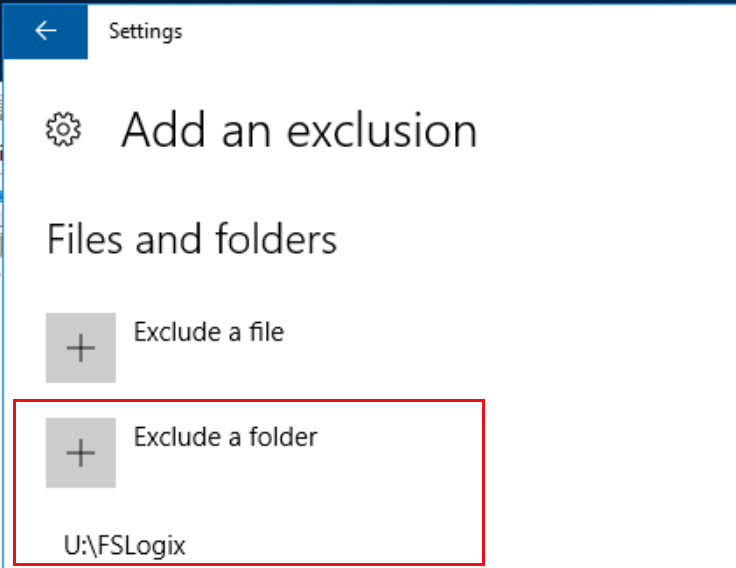
It’s time to test the remote connection, it could be RemoteApp, Remote Desktop, VDI via Parallels RAS or Windows Virtual Desktop on Azure, the result is the creation of a new folder of each user, with a VHDX file inside.
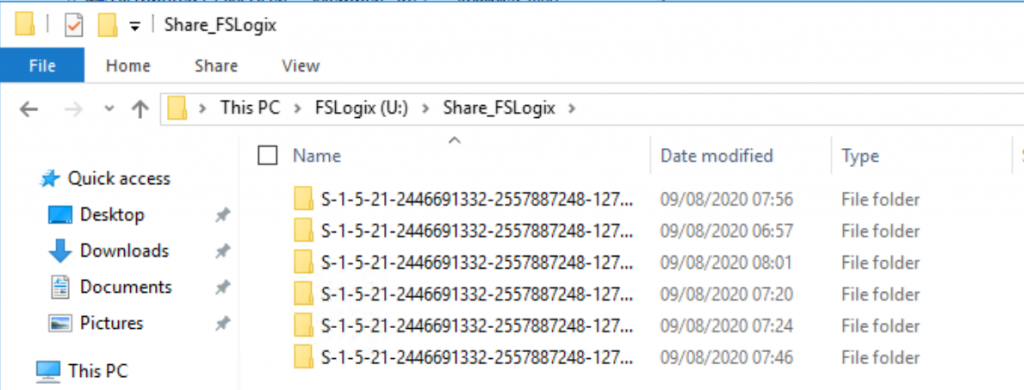
Troubleshooting
To check if everything works fine, there’s a cool tool called FSLogix Profile Status, available into FSLogix agent folder, that show logs, events and everything you need to understand what happen into the server.

Consideration
Some consideration before starts:
- ReFS is supported
- ReFS should be the first choice if you plan to use differential disk, because merging process goes much faster with ReFS due to the more efficient block handling
- If the profile is already present on local PC, when you move to FSLogix the entire content will be deleted
- There’s no an easy way to migrate, yet, local profile to VHDX but with FSLogix Command-Line Utility something can be done
- Evaluate the right storage volume to avoid performance issues
FSLogix is a great solution to manage Profile Container and the combination with Parallels Remote Application Server is perfect to improve performance, simplify your infrastructure and prepare the scalability for the future.


